Nestled amid Maui’s most recent lava flow, Ahihi Cove is home to a flourishing underwater world.
Vibrant corals shimmer beneath the surface. Schools of striped manini move in unison as turtles drift lazily on the currents. And occasionally, larger animals like reef sharks and spotted eagle rays stop by to say hello.
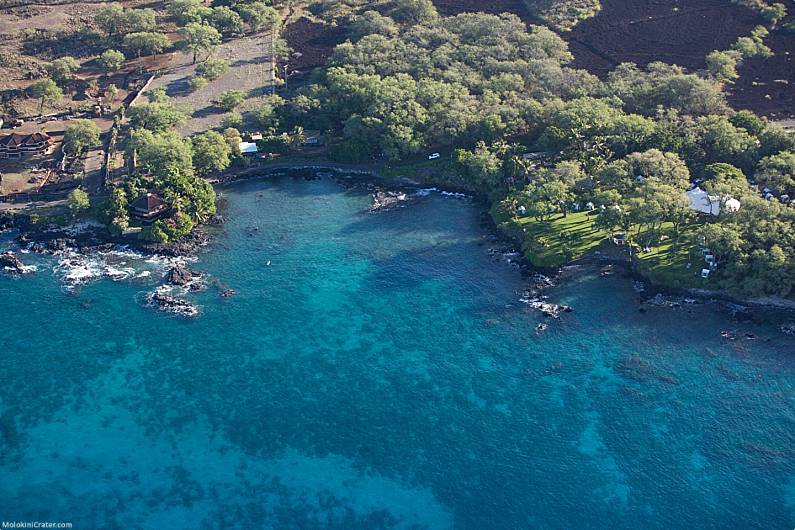
Ahihi Cove’s biodiversity comes as no surprise. The cove is part of the Ahihi-Kinau Natural Area Reserve, where fishing, motorized boats, and new development are prohibited. Thus, the reef in this area is first-rate. And fortunately for us, snorkeling is allowed in parts of the reserve – including Ahihi Cove.
Ready to dig into the logistics of snorkeling at Ahihi Cove? Let’s take a look at what you can expect from your visit and how we rate the snorkeling, crowds, amenities, and other factors at Ahihi Cove. Here is our unbiased review of snorkeling at Ahihi Cove.
The Snorkeling – Fantastic!: 8/10
Ahihi Cove has that mass appeal factor. Beginner snorkeler? Great. Lifelong, expert diver? Even better.
Ahihi Cove caters to all skill levels. The horseshoe-shaped cove has calm shallow waters that slowly slope into deeper waters.
The “inside” shallow waters are ideal for beginners. On calm days, currents are very mild, and beginners can explore the shallows at their leisure. And while the snorkeling isn’t as pristine in the shallows as it is in Ahihi’s deeper waters, there is still a ton to see.
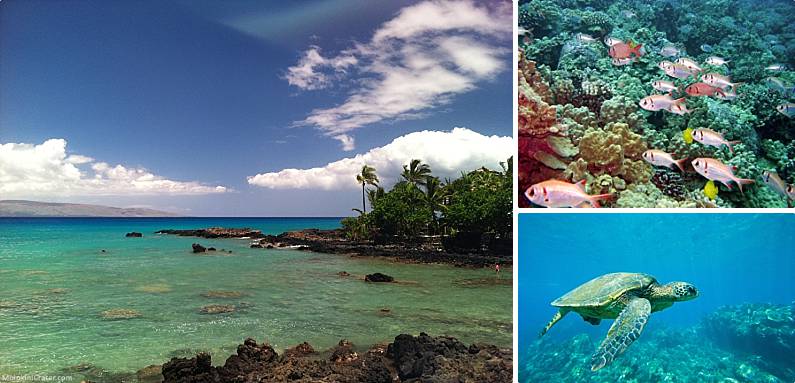
Stick to the inside, and you’ll be cruising with yellow tangs, eels, and a variety of colorful butterfly fish. Sometimes a turtle even ventures into the shallows to munch on algae! You’ll also get up-close glimpses of shiny yellow lobe coral and maybe some finger coral. Just remember to look and not touch!
If you’re an experienced snorkeler, you can venture into the mouth of Ahihi’s slender cove to explore slightly deeper depths (between 15 and 25 feet). This is where things really get good. Out here, the undulating sea floor is covered with vibrant, healthy corals. Larger reef fish like triggerfish, parrotfish, unicorn fish, and trumpet fish gather en masse. Plus, you’ll likely see a turtle or two, and maybe – if you’re very lucky – an eagle ray or manta ray.
Parking – Large Parking Lot, Short Walk From Snorkel Site: 8/10
The parking situation at Ahihi Cove is simple. However, you can’t park directly at the cove – you have to walk about 800 feet from the parking lot to reach the cove.

The parking lot is located on the ocean side of Makena Road, about a mile past Big Beach (Makena State Park). You’ll drive past Ahihi Cove before turning into the parking lot. There are usually plenty of parking spaces – unless there is a south swell. The parking lot is located steps from one of South Maui’s best surfing spots, “Dumps.” When the waves are good here, things can get busy. But if there’s enough swell that people are surfing Dumps, snorkeling Ahihi Cove is usually out of the question, so it’s a moot point.
Non-residents must pay a $5 fee to park and explore the area reserve. There are two payment machines in the parking lot that accept credit or debit cards. Remember to display your payment slip on the dashboard of your car. Avoid leaving any valuables in the car. We wouldn’t say break-ins are common here, but it’s better to be safe than sorry.
From the parking lot, you’ll follow a trail that hugs the road, backtracking towards Ahihi Cove.
Crowds – Mild, But Can Feel Crowded In The Small Cove: 6/10
Crowds are usually fairly mild at Ahihi Cove. You likely won’t be shoulder-to-shoulder with dozens of other people here. There are so many snorkel spots in the South Maui area that the crowds are rarely concentrated in one place.
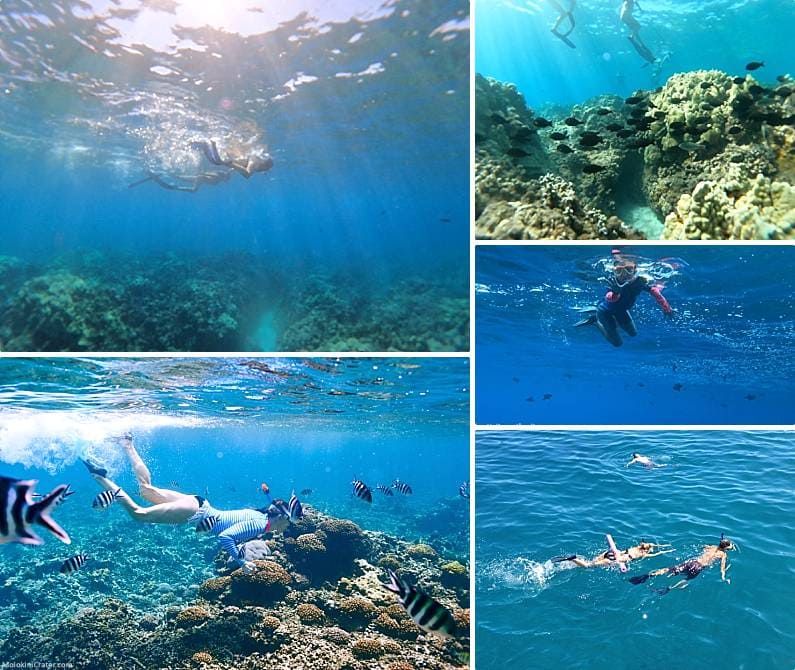
But that doesn’t mean Ahihi Cove is void of people. You will probably share the cove with several others during your visit. But since Ahihi Cove is so small, it can feel crowded if there are more than a couple of snorkelers exploring the shallows.
Overall, the crowds at Ahihi are rarely overwhelming, and you’ll be free to explore without bumping into other snorkelers.
Amenities – Bare Minimum: 4/10
There are very few amenities at Ahihi Cove. Remember, this is a natural area reserve, not a public park.
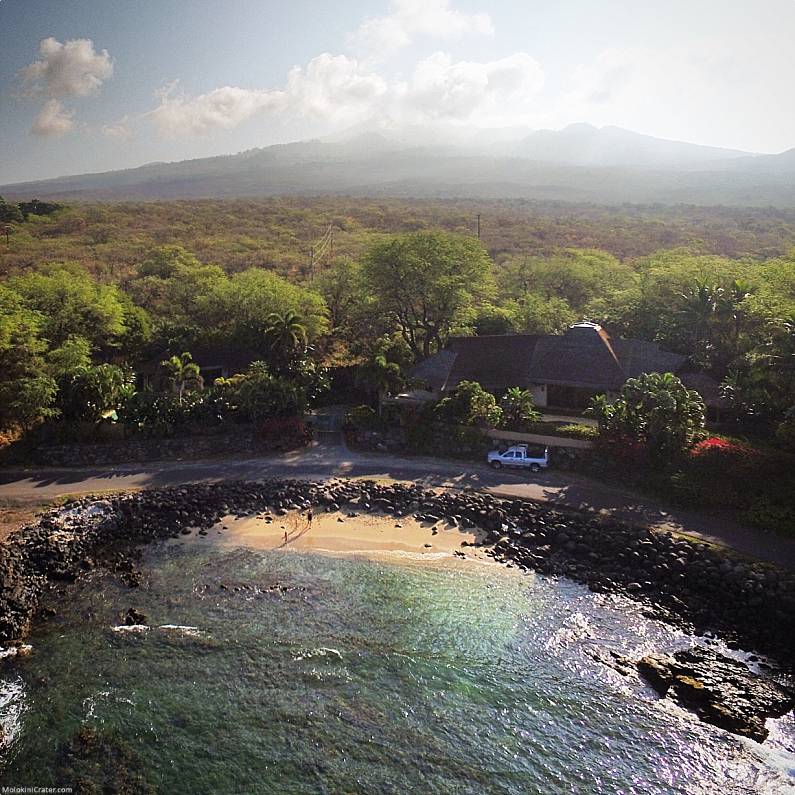
There is a portable toilet and dumpster in the Ahihi Kinau parking lot, but no showers – so bring your own rinse water. There are also several informative signs in the parking lot and at Ahihi Cove about snorkeling etiquette and how to care for the reef. Be sure to look over the signs before entering the water.
One cool amenity in the Ahihi parking lot: a reef-safe sunscreen dispenser. While it’s best to use a rashguard instead of sunscreen while snorkeling here, you can use the reef-safe sunscreen dispenser if you forget your sun protection. It’s thick, gooey stuff – best used on your face – but it gets the job done and will spare you a bad sunburn.
Safety – Fairly Calm, Typical Ocean Hazards: 7/10
Thanks to Ahihi’s horseshoe shape, conditions within the cove are usually calm. It is protected from the wind and strong currents, although when the surf is up, surges can rush into the bay. It’s best to avoid Ahihi Cove when there are waves.
In Ahihi’s deeper waters, you might have to navigate stronger currents. You should only venture into deep water here if you are an experienced snorkeler.
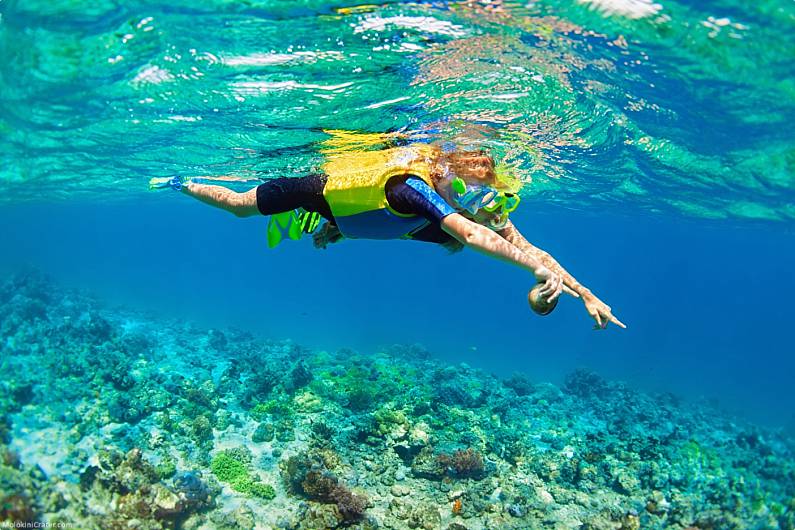
However, the biggest danger at Ahihi Cove is sharp rocks and sea urchins. You should only attempt to enter the cove on the northern end, where a concrete slab creates an easy entryway into the water. Never step on any rocks or reef while snorkeling. Not only can you get cut up or poked by wana (sea urchins), but stepping on corals can harm the reef.
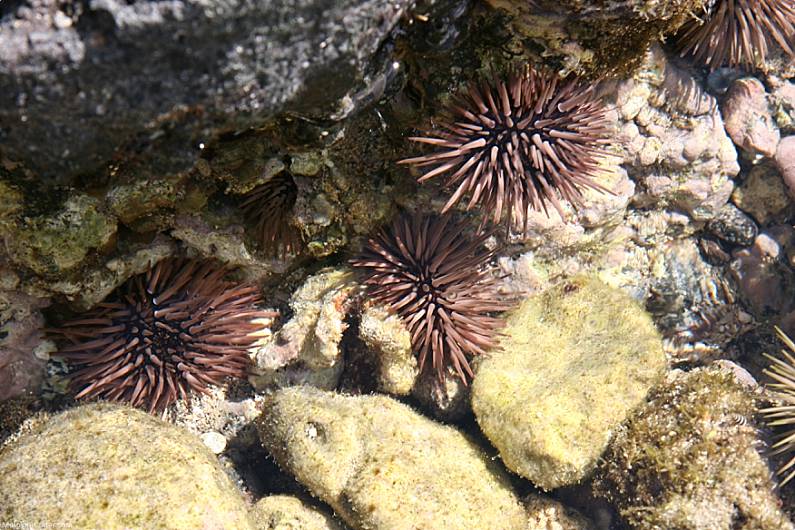
Conditions – Ideal Conditions Occur Very Often: 9/10
As we mentioned above, Ahihi is protected from wind and currents. This means ideal conditions occur almost daily.
The best-of-the-best conditions occur here on mornings with the mid-to-high tide and no swell, and you can explore the shallows here when other snorkeling spots in South Maui get too windy.
All in all, Ahihi Cove is a great place to snorkel on Maui – no matter your skill level. We’d recommend it to beginner and expert snorkelers alike. Plus, the reef is healthy and gets more impressive the further out you go. And, of course, the protected conditions at Ahihi make it a favorite when other snorkel spots get blown out.
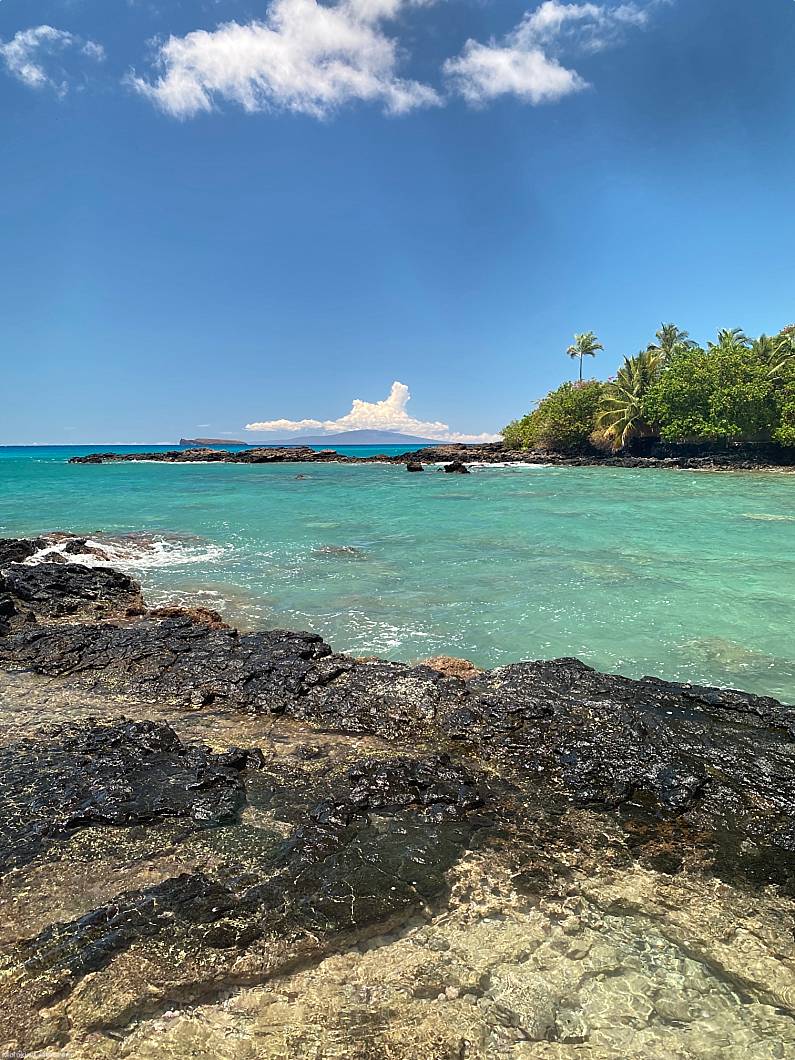






The rocks at the south end get very slippery and can be deceiving. Recommend not entering there.
Can you rent snorkeling gear?
Yes, Boss Frog’s has the best snorkel gear rentals.